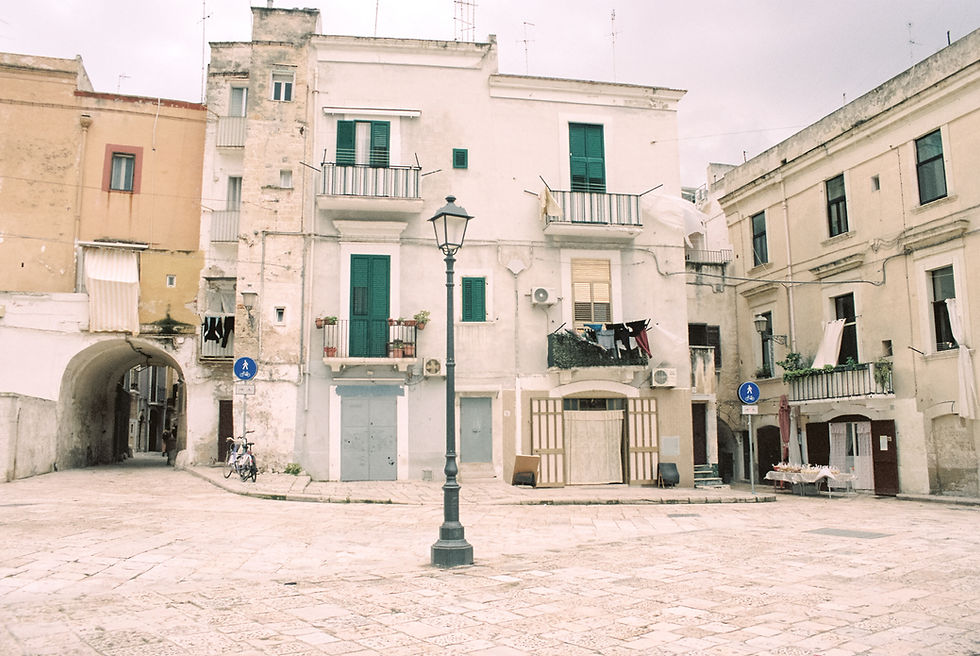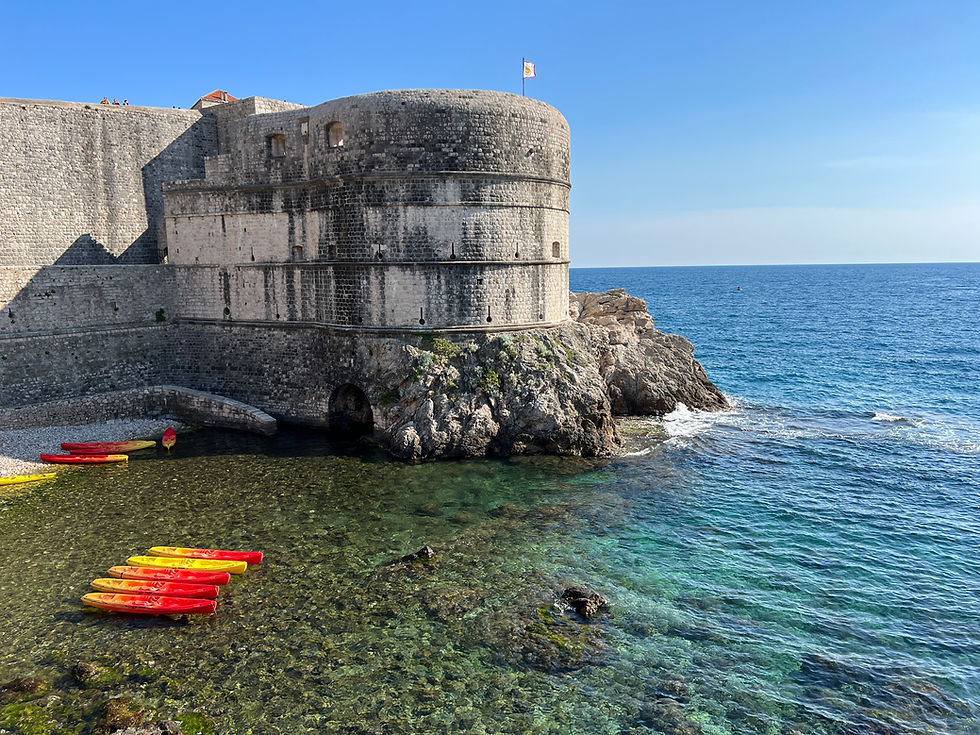A Travel Guide to Bari, Italy: Best Things to Do, Historic Streets & Local Food in Puglia
- Will Gerson
- May 18
- 4 min read
Updated: Nov 22
Bari, on Italy’s southeastern Adriatic coast, directly across from the Balkans, has a fascinating history as a melting pot of Mediterranean cultures, a geographical and cultural midpoint between the Christian kingdoms of the west and the east.

This history is clearly visible in the winding streets of the old city, known as Bari Vecchia, which follow the original Byzantine layout and have a magical feeling to them completely different from anywhere else in Italy. Read on for a guide to help you understand Bari’s past and present through some of its most important monuments.
Basilica di San Nicola
The oldest church in Bari, this basilica was constructed in the 11th century to house the relics of Saint Nicholas, which a group of Italian merchants had exhumed from his original burial site in modern-day Turkey, supposedly to protect them from fighting between the Byzantines and the Seljuk Turks. Saint Nicholas is a venerated figure for Roman Catholic and Eastern Orthodox denominations, particularly in the east, where he is regarded as a great protector. Bari thus became an important pilgrimage site for believers from both churches, with Nicholas serving as a bridge between east and west.

The basilica itself represents this mixture of the two sides of Christian Europe. Predominantly Romanesque in its exterior, the Normans who built the church decided to include lavish Byzantine-style frescoes that pay homage to the saint’s eastern origins. In the church’s crypt, you can view the remains of Nicholas, following in the footsteps of pilgrims who have for centuries come from far and wide to kneel before the saint’s tomb.
Cattedrale di San Sabino
Bari’s 12th-century cathedral was built by the Normans on top of the remains of the city’s original Byzantine cathedral, which had been destroyed by William I, King of Sicily, whose domain covered not only the island of Sicily but also the entire lower half of the Italian peninsula. The cathedral is another fine example of the Romanesque style in Puglia, with the simplicity of its design meant to convey the strength of its foundation. The cathedral’s design also clearly incorporates Moorish influences, with the hexagonal cupola and belltower reminiscent of a mosque and minaret; this same phenomenon can be seen in the marvelous Arab-Norman style developed in and around Palermo.
Castello Normanno-Svevo
This castle on the west side of the old city has a long history of destruction and reconstruction, first built by Roger II of Sicily in the 12th century, then destroyed by his son William I, before being rebuilt in the following century by Frederick II, the German who rose to become Holy Roman Emperor. Legend has it that Frederick met with Saint Francis of Assisi here. Today, the castle is used as an exhibition space.

Strada delle Orecchiette
Strada Arco Basso, better known as Strada delle Orecchiette, is an emblematic street of Bari’s old town that is famous for its nonne (Italian grandmothers) who sit outside their homes preparing and selling hand-made fresh and dry pasta. Orecchiette, which means ‘little ears,’ is the most typical pasta shape of Puglia, and it is the basis of some of the region’s most famous dishes, like orecchiette con cime di rapa (rapini). A bag of pasta makes for a great souvenir, but an even better experience is to be invited by one of the nonne into their homes to enjoy a hot bowl of it. I recommend heading to the house of Nunzia for an unforgettable meal.
Food
Puglia’s cuisine is deeply rooted in the fruits of the land and the sea that surrounds it. The region’s most famous creation is burrata, the sumptuous ball of mozzarella filled with cream in its center, but, like everywhere in Italy, there are numerous other outstanding products and recipes to try here.

Puglian cuisine is often considered cucina povera (‘cuisine of the poor’), but this does not take away from its value; rather, the simplicity of its recipes allows the quality of its ingredients to shine. A perfect example is the focaccia barese, a local variation on the focaccia bread popular throughout the country that is topped with tomatoes, oregano, and olives, almost like a delicious, fluffy pizza without the cheese. You can get a heavenly one at Panificio Santa Rita, where the locals line up outside to get their hands on a hot focaccia fresh from the oven.

For typical pasta dishes, I recommend Ristorante Antò, where you can enjoy large portions of authentic Puglian creations like orecchiette with cime di rapa or the mouthwatering ragù di brasciola (tomato sauce with thinly sliced veal chops). Another good option is the famous spaghetti all’assassina, a dish of spaghetti in a spicy tomato sauce with a unique preparation: rather than boiling the pasta in water, the spaghetti is cooked directly in a cast iron pan, lending it a signature crispy texture.

If you’re looking for a lunch on the go, head to Voglia… Pane e vino for a delicious sandwich on wonderful, fresh baked bread.
Looking for more places to explore in the region? Visit our Puglia page here.

















